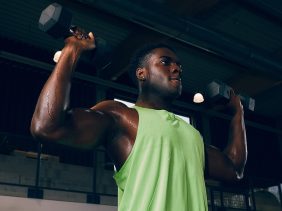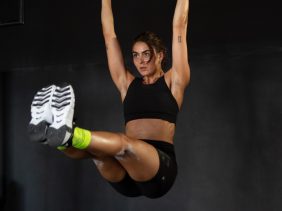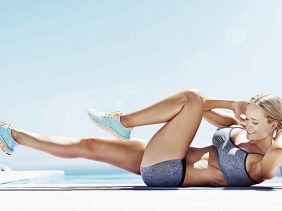Pilates: The gentle strength training
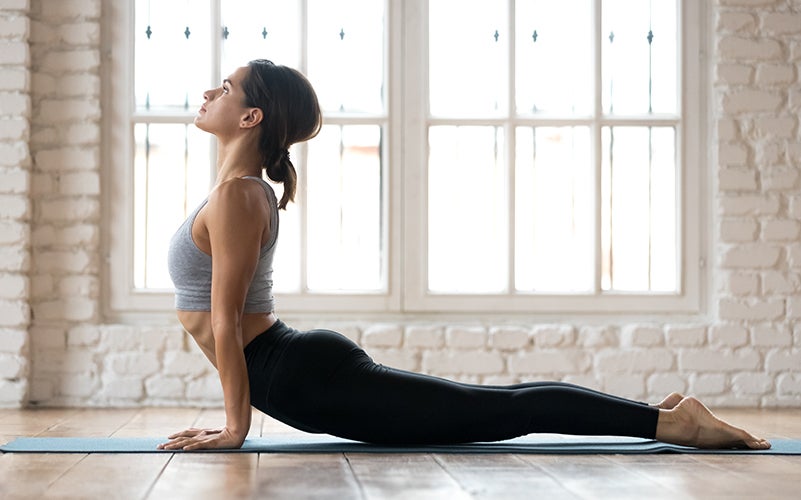 ©da-kuk
©da-kuk
Pilates is an intensive but gentle muscle-building sport that focuses on the core strength. In this article, discover everything there is to know about the Pilates method, as well as the best tips to get started.
What is Pilates?
When we talk about Pilates, many people initially assume it’s a type of yoga, just without the upside-down dog posture or the ‘Om’ at the end of a session. This exercise form often gets a bad rap for being slow, low-intensity, and better suited for women. But when done properly, Pilates exercises can actually be just as demanding and effective as strength training or HIIT.
Through a series of pelvic, lower back, abdominal, and balance exercises, Pilates combines a full body workout with fluid breathing. Each exhalation is coordinated with each movement, allowing your muscles to tense and relax as needed, which both increases your strength and calms your mind at the same time. Overall, pilates focuses on the core of the body, or “the trunk” as it’s also known. Everything from the ribs to the pelvis will be strengthened with a regular Pilates practice.
Pilates is named for the man that created it, Joseph Hubertus Pilates. During the First World War, he taught his method to patients to help them recover more quickly. He also designed a key piece of Pilates equipment—known as The Reformer, it doubles as a stretching board and a rowing machine. His original was made with just a large wooden frame and a spring, and it was so good, they still use something similar today at Pilates studios around the world.

©da-kuk
What areas does pilates strengthen?
If you’ve ever taken a Pilates class you’re probably familiar with the term “trunk” or “core.” Both refer to the muscles in the center of your body, which is what you’ll be targeting from the moment you start your session.
The focus is on the core strength because that’s the strongest part of your body. After all, Joseph Hubertus Pilates once said, “All strength comes from the center of the body.”
Your core contains all your abdominal muscles, as well as your pelvic floor and lower back muscles.
But what makes Pilates more effective at strengthening your core than other workouts? During a session, you work your muscles deep down rather than superficially. And you’re training both your upper and lower body at the same time, so you’re essentially doing a double-duty workout.
Other benefits of Pilates include:
- Strengthens muscles without straining your joints.
- Improves posture.
- Improves flexibility.
- Prevents injuries, especially in the hips and shoulders.
- Helps you develop a better awareness of your own body.
Editor’s Tip: For your Pilates training to be really effective, make sure you’re simultaneously eating a diet rich in protein and carbohydrates, as well as all the essential vitamins and minerals. Our Daily Vitamins or Vitamin Drops will help you meet your daily needs in no time.

The Six Basic Principles of Pilates
Each Pilates session follows the six basic principles originally used by Joseph Pilates himself, which are based on Eastern disciplines such as martial arts and yoga.
- Centering: Stabilizing your core is the focus of every Pilates session, and you should begin each move by activating the center of your body.
- Breathing: Synchronizing your movements and breathing in a calm and fluid way will ensure your muscles get a sufficient supply of oxygen.
- Control: Moving through the workout with grace will preserve your energy so that you’re able to work harder for longer.
- Concentration: Concentrating on the workout, rather than letting your mind drift, will ensure your muscles are engaged and you’re moving as efficiently as possible.
- Precision: Focusing on the alignment and placement of each movement will give you more control and maximize the benefits of your workout.
- Flow of movements: Your movements should be dynamic and graceful, flowing gently in tandem with fluid breathing.
The exact rhythm of movements will vary from person to person, and you’ll determine what’s right for you the farther into your practice you get. Exercises include dynamic abdominal, arm, and leg lifts in the crawl position and pelvic lifts in bridge pose. Pilates also includes posture strengthening poses like plank pose and variations like side plank with your leg lifted.

What happens during a Pilates session?
Pilates sessions usually last anywhere from 45 to 75 minutes. After a warm-up, the Pilates instructor will show you different exercises and sequences of movements to be performed one after the other. Their aim is to activate the center of your body, while simultaneously training both your upper and lower back.
Sometimes classes will also include breathing exercises and stretching sessions. And you’ll always end with a cool down to relax the muscles you’ve been working for the last hour or so.
Pilates is practiced on a yoga mat, and you don’t need to use anything but your own body weight to train. However, your Pilates instructor may incorporate equipment into their sessions, including Pilates balls, resistance bands, foam rollers, and balance and resistance blocks. These tools aren’t necessary, but they can bring variety to the workout, and also help improve your coordination and precision.
If you feel like this isn’t intensive enough for you, you also have the option of trying Reformer Pilates, in which participants train their muscles on a large machine while being supervised by a professional. However, having a certain amount of muscle strength is a prerequisite to do this option, and it’s better to stick to mat workouts while you’re just getting started.
Tip for beginners: If you don’t want to or can’t take a Pilates class at a studio, know that you still have many online options. If you’ve never done Pilates before, it may be better to try it out in a studio where a certified instructor can introduce you to the movements and make sure you’re doing them correctly. It’ll help you avoid unnecessary injuries, and make it easier for you to train on your own one day!
What’s the difference between Pilates and yoga?
Although Pilates is based on the basic principles of yoga and other Eastern exercises, its methodology is very different.
Here are the main differences between the two sports:
| Yoga | Pilates | |
| Origin | A philosophical teaching from India that’s thousands of years old. | A comparatively new German training method that was developed at the beginning of the 20th century to help soldiers recover. |
| Breathing | Nearly all breathing is done through the nose. | Breathing is done in through the nose and out through the mouth. |
| Sequence of movements | Individual postures (known as asanas) are maintained over several breaths or combined into a sequence of fluid movements (also known as a flow). | Transitions between movements are fluid, but each individual exercise includes repetitions and counting times. |
| Spirituality | In addition to workouts, yoga also consists of meditation, concentration exercises, and self reflection. Originally, yoga was developed to enable people to meditate for longer periods of time. | Pilates focuses on mindfulness only at the margins. The true focus is the development of physical strength in a gentle way. Everything revolves around the trunk or core and the training of the pelvis, abdomen, and lower back. |
Editor’s Tip: If you’re not sure whether yoga or the Pilates method is better suited to you, consider Yogilates. Though that sound may sound like a latte for yogis, it’s actually a blend of the two disciplines, combining exercises and movements from both.
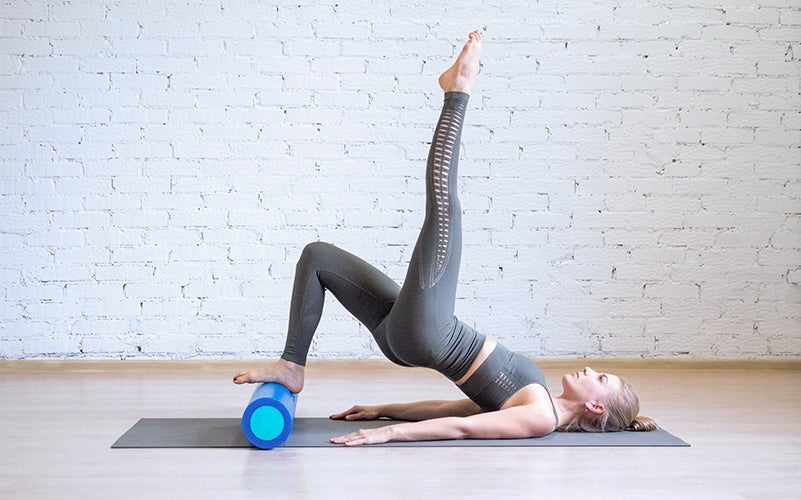
Who is Pilates recommended for?
The Pilates method is ideal for anyone who wants to improve their flexibility and develop core strength. Many bodybuilders, martial artists, and dancers alike swear by Pilates sessions as a complement to their main discipline.
Pilates may also be for you if you are looking for an intensive but calm workout that improves your posture, mobility, and back strength.
In particular, before, during, and after pregnancy, Pilates is also a good option for strengthening the pelvic floor.
The Pilates Method: Our Conclusion
- Pilates is a sport that strengthens the whole body in an intense but gentle way.
- Pilates exercises engage the core, which is constantly active during a session.
- Pilates trains your abdomen, pelvic floor and lower back in a deep way.
- Pilates improves posture, promotes flexibility, and strengthens the entire musculoskeletal system.
- A Pilates exercise follows six basic principles: centering, breathing, control, concentration, precision and flow of movement.
- Unlike yoga, Pilates does not include spiritual elements like meditation and self-reflection. The emphasis is on physical fitness.
- Pilates is particularly suitable for people before, during and after pregnancy to strengthen the pelvic floor.
Sources for this article
We at foodspring use only high-quality sources, including peer-reviewed studies, to support the facts within our articles. Read our editorial policy to learn more about how we fact-check and keep our content accurate, reliable, and trustworthy.



























